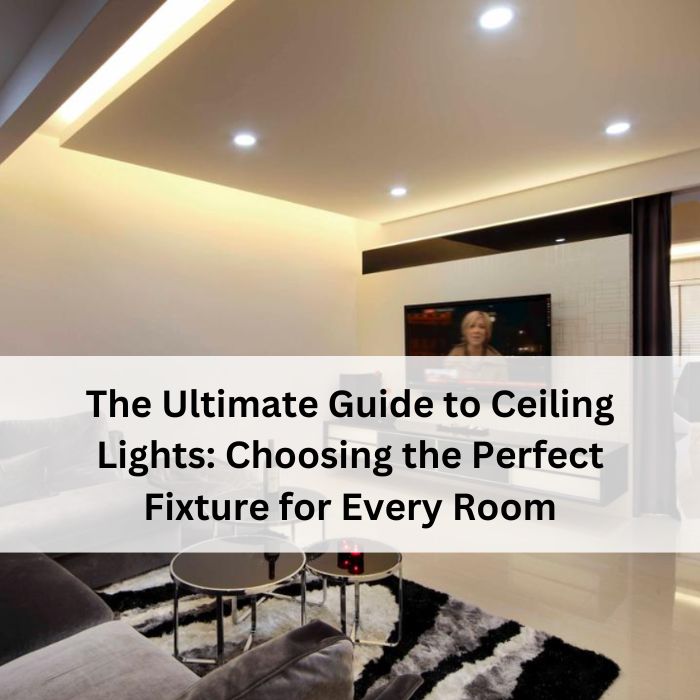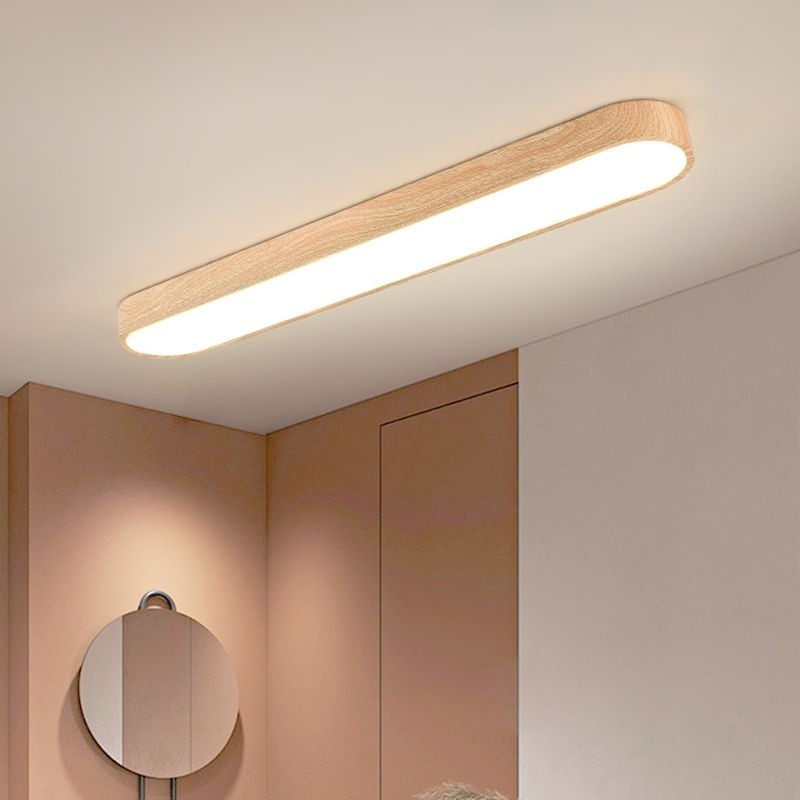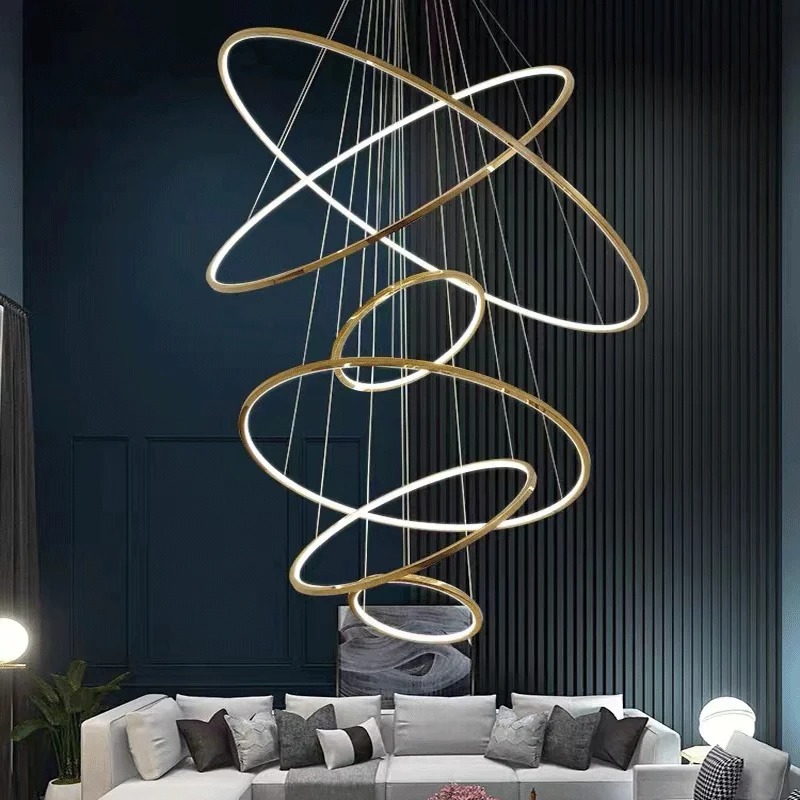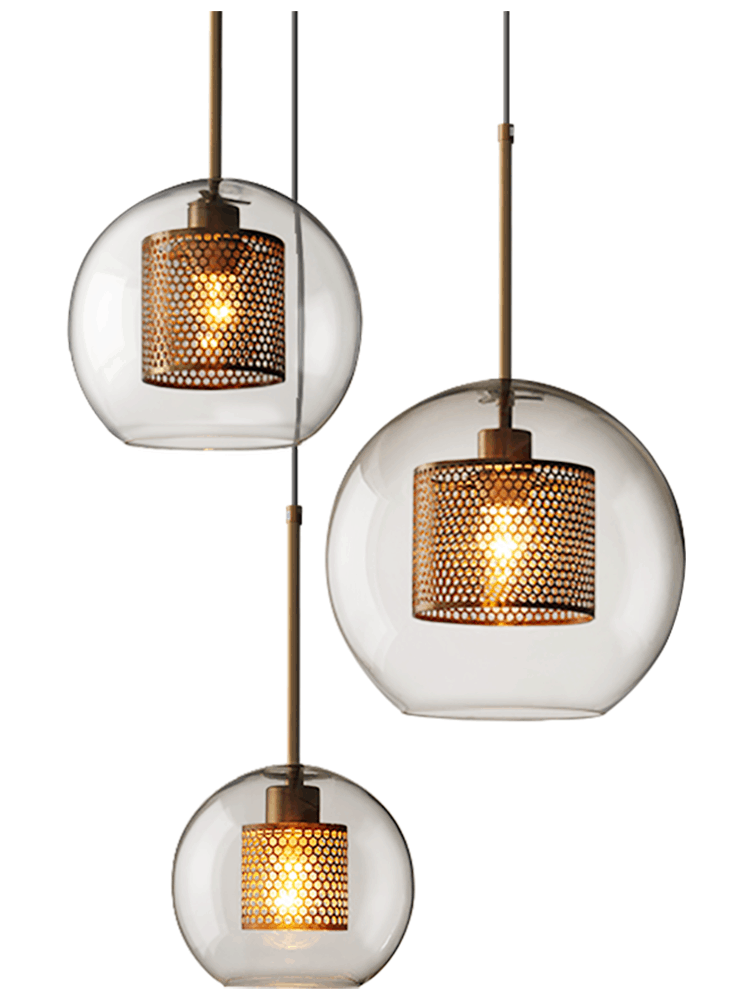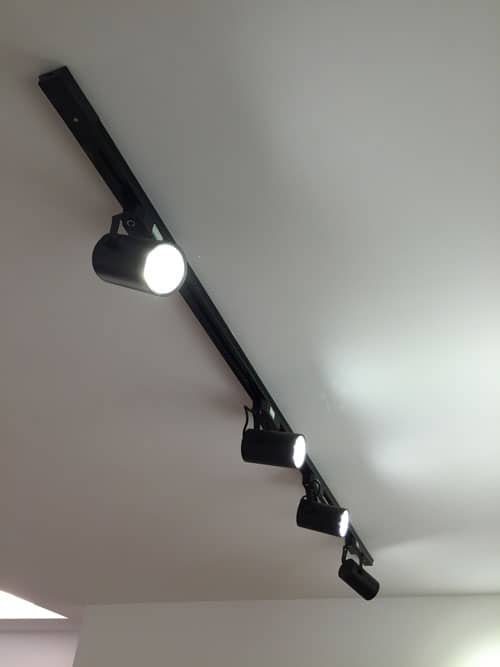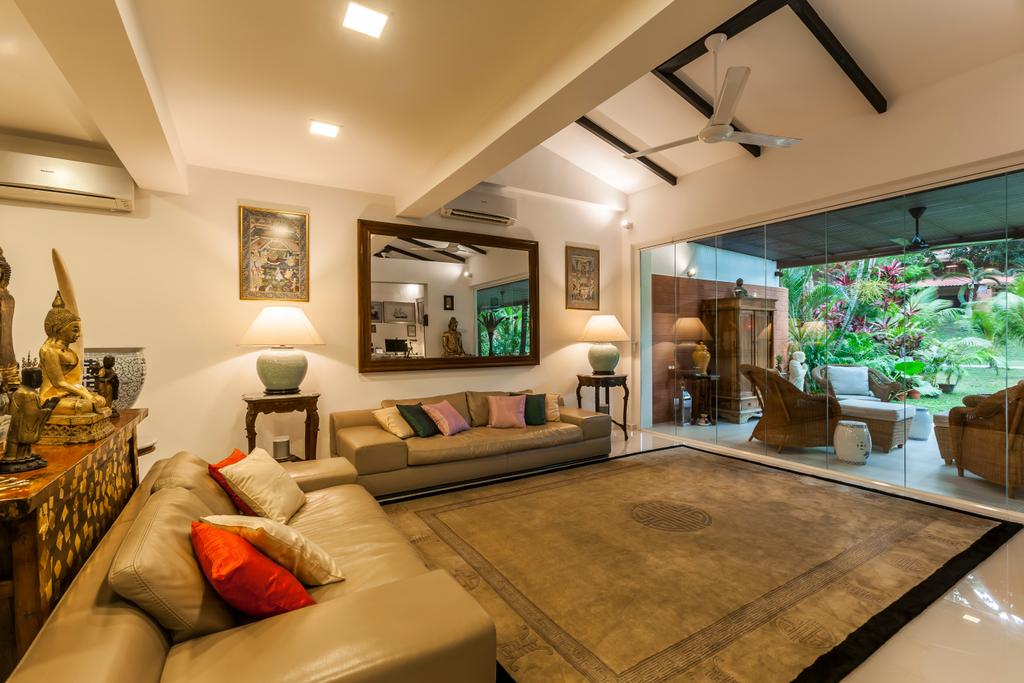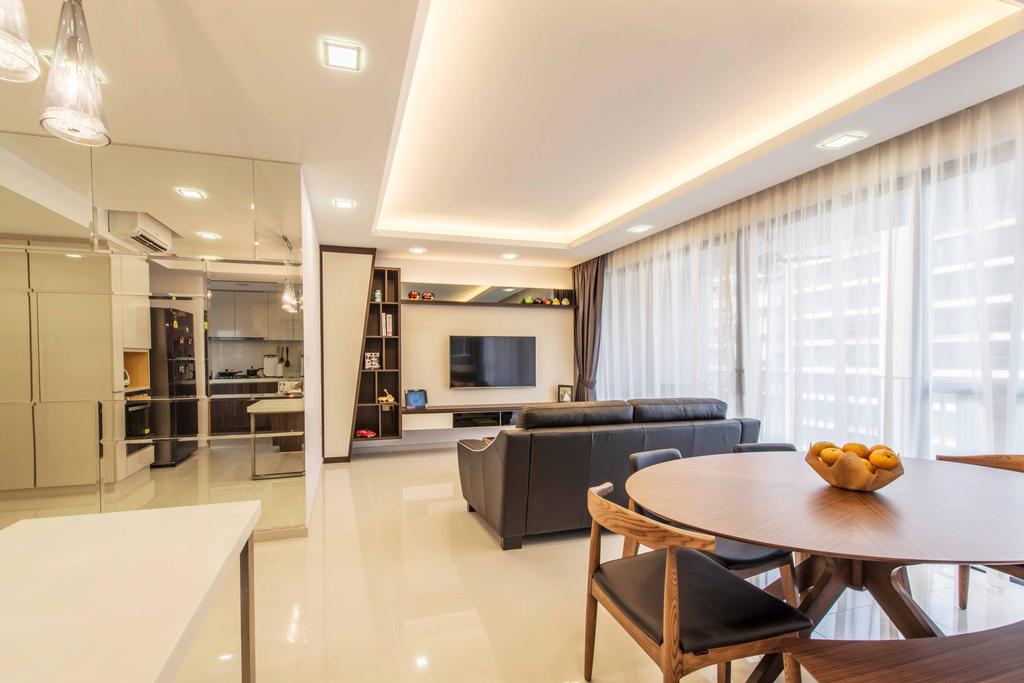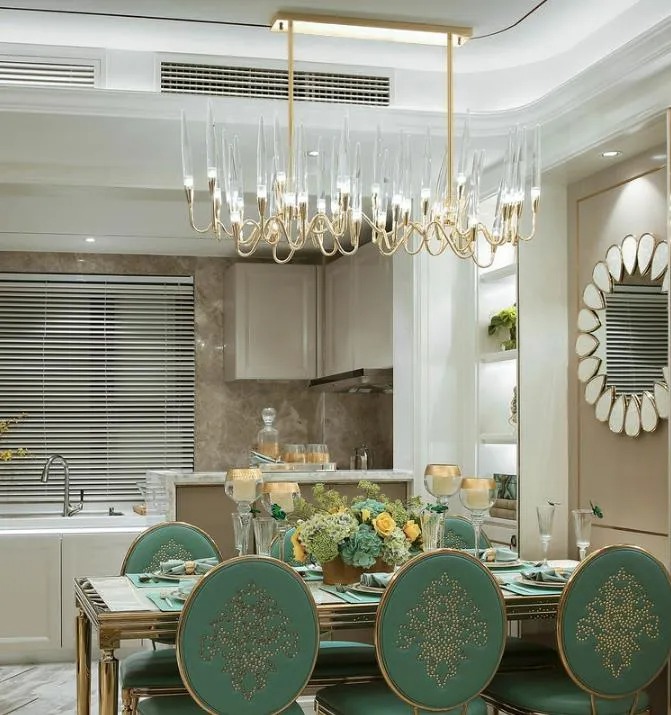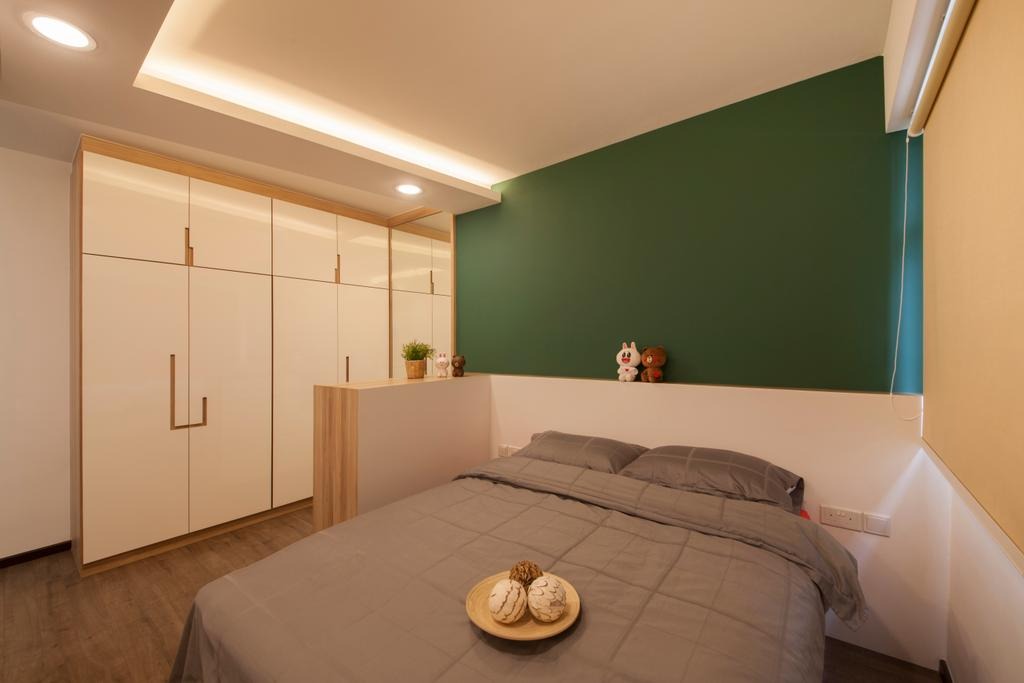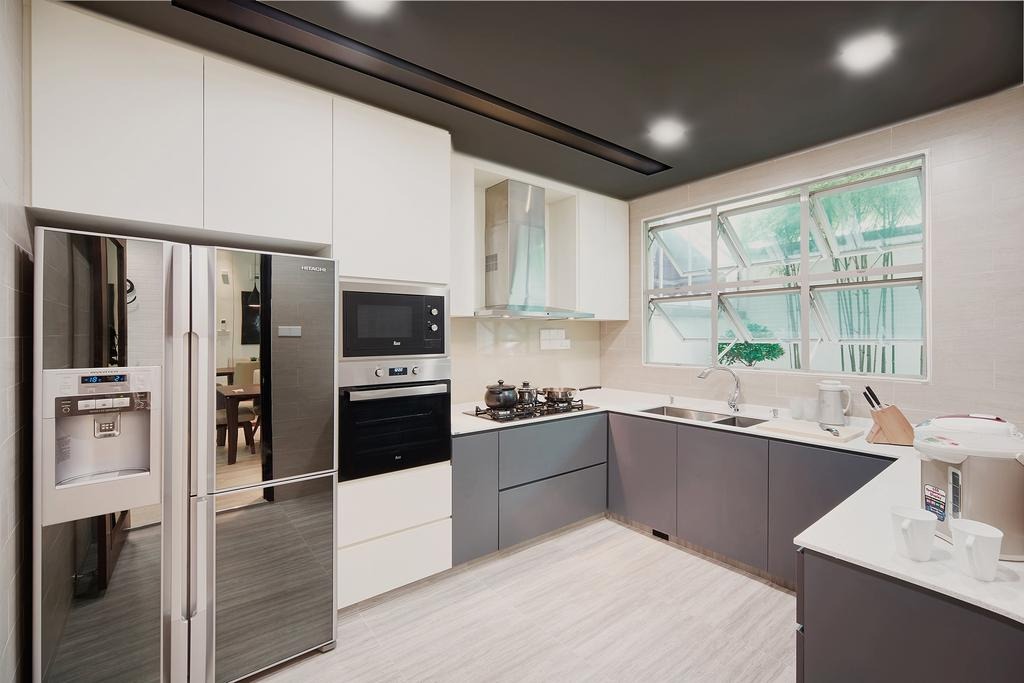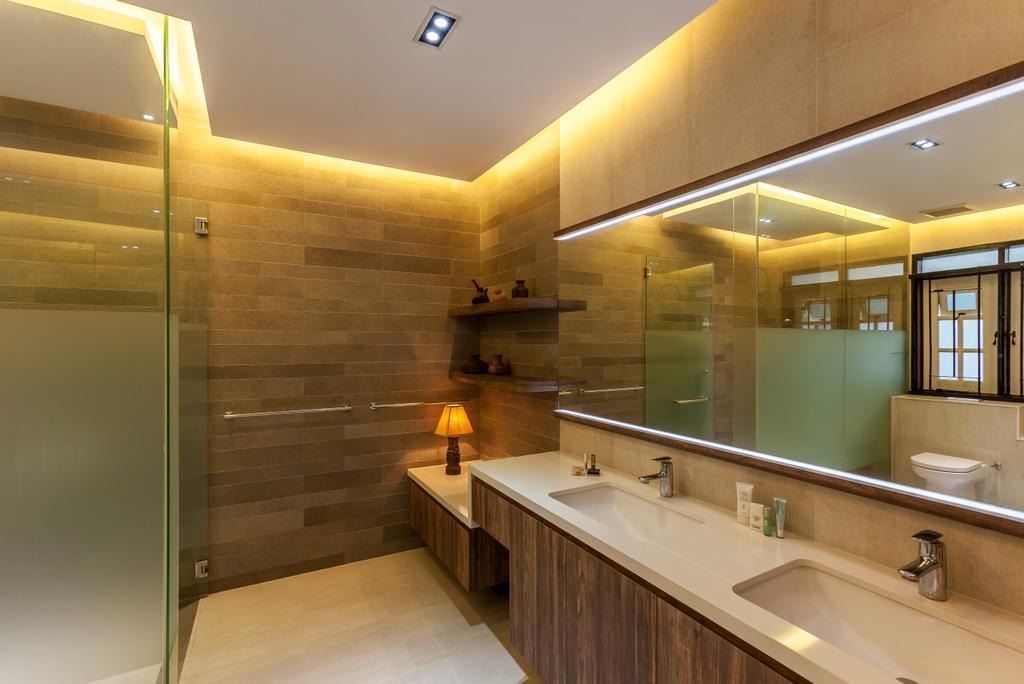Understanding the Importance of Ceiling Lights
Ceiling lights are not just functional elements but also critical design features that can transform the ambiance and aesthetic of any room. They provide the primary source of illumination, setting the tone for the entire space. Choosing the right ceiling light involves more than just picking a design you like; it’s about finding a fixture that complements the room’s purpose and style.
Why Ceiling Lights Matter in Interior Design
The right ceiling light can make or break the design of a room. It can enhance architectural details, create visual interest, and set the mood for different activities. A well-chosen light fixture can become a focal point, while poor lighting can make even the most beautifully designed room feel flat and uninspiring.
The Role of Lighting in Setting Ambiance
Lighting significantly influences how a space feels and functions. Warm, soft lighting can create a cozy and intimate atmosphere, perfect for relaxing areas like the living room or bedroom. In contrast, bright, cool lighting is ideal for task-oriented spaces such as the kitchen or home office, where clarity and focus are essential.
Enhancing Aesthetics with the Right Fixtures
Choosing a ceiling light that matches your décor is crucial for creating a cohesive look. Whether you prefer a modern, minimalist design or a more traditional aesthetic, the right fixture can enhance your space’s visual appeal. Consider the style, size, and finish of the light to ensure it complements the room’s overall theme.
Different Types of Ceiling Lights
There are various types of ceiling lights, each suited for different needs and spaces. Understanding these options helps you select the best fixture for your home. From elegant chandeliers to practical recessed lights, each type offers unique benefits and styles.
Flush Mount and Semi-Flush Mount Lights
See this product: Ainoxel Wooden Flush Mount Ceiling Light
Flush and semi-flush mount lights are versatile options for rooms with low ceilings or where a more subdued look is desired. They sit close to the ceiling, making them ideal for spaces with limited headroom, such as hallways and bedrooms. Despite their compact size, they come in a variety of designs, ensuring you don’t have to compromise on style.
Best Use Cases and Advantages
Flush mount lights are perfect for small rooms, closets, and entryways, where a simple, unobtrusive light is needed. Semi-flush mounts offer a bit more style and are great for living rooms and bedrooms, where a more decorative fixture is appropriate. Both options provide good general lighting without overwhelming the space.
Chandeliers
See this product: Laloopor Multiple Rings Pendant Light
Chandeliers are a statement piece that can add drama and elegance to any room. They come in a wide range of styles, from ornate crystal designs to sleek modern forms. Typically used in dining rooms and entryways, chandeliers draw the eye upward and can serve as the focal point of the space.
Adding Elegance to Any Space
A well-chosen chandelier can elevate the look of a room, making it feel more luxurious and sophisticated. It’s not just about the light it provides but also the statement it makes. Whether you want a touch of glamour in your dining room or a bold centerpiece in your living room, a chandelier can deliver just that.
Pendant Lights
See this product: Ramoona Clear Glass Metal Grill Pendant Light
Pendant lights are incredibly versatile and can be used in almost any room of the house. They hang down from the ceiling, usually suspended by a cord, chain, or rod, and are available in various styles and sizes. Pendants are excellent for providing focused light, making them a popular choice for kitchen islands and dining areas.
Versatile and Functional Lighting
Pendants can serve as both task and ambient lighting, depending on their placement and number. You can hang a single pendant for a minimalist look or group several together for a more impactful statement. Their versatility makes them suitable for everything from illuminating workspaces to creating cozy reading nooks.
Recessed Lights
Recessed lights, also known as downlights, are installed within the ceiling, providing a clean and modern look. They are ideal for rooms where you want the lighting to be subtle and unobtrusive. Recessed lighting is often used for general illumination or to highlight specific areas, such as artwork or architectural features.
Creating a Minimalist Look
If you prefer a sleek, modern aesthetic, recessed lighting is the way to go. It provides ample illumination without drawing attention to the fixtures themselves, making it perfect for contemporary spaces. Recessed lights can also be used in combination with other lighting types to create a layered effect.
Track Lights
See this product: LED Tracklight Ceiling Spotlight Pack
Track lights consist of several light heads mounted on a single track, allowing you to direct the light where it’s needed. They are particularly useful in spaces that require adjustable lighting, such as kitchens, offices, or galleries. Track lighting is both functional and stylish, offering flexibility in design and placement.
Perfect for Adjustable Lighting
Track lighting allows you to focus light on specific areas, making it ideal for highlighting artwork or illuminating workspaces. The adjustable nature of track lights means you can easily change the direction and focus of the light as your needs evolve. This flexibility makes them a popular choice for modern homes.
How to Choose the Right Ceiling Light for Each Room
Choosing the right ceiling light involves considering the function, size, and style of each room. Different rooms have different lighting needs, and selecting the right fixture can significantly impact the room’s atmosphere and usability. Let’s explore how to choose the best ceiling light for various spaces in your home.
Living Room Lighting
Image credit: Qanvast / The Interior Lab
The living room is often the most versatile space in the home, used for everything from relaxing to entertaining guests. The right ceiling light can enhance this multipurpose room, providing both ambient and task lighting as needed. Consider a fixture that complements your living room’s style and provides sufficient light for various activities.
Choosing the Right Size and Style
When selecting a ceiling light for the living room, size matters. A large fixture in a small room can be overwhelming, while a tiny light in a spacious room may not provide enough illumination. Choose a light that suits the room’s scale and design, and don’t be afraid to make a bold statement with your choice.
Layering Lights for Maximum Impact
In addition to the main ceiling light, consider adding floor lamps, table lamps, or wall sconces to create a layered lighting effect. This approach allows you to adjust the lighting for different moods and activities, ensuring your living room is both functional and inviting. Layering also adds depth and dimension to the space.
Dining Room Lighting
Image credit: Qanvast / Space Define Interior
The dining room is a place for gathering and enjoying meals, and the lighting should enhance this experience. A well-chosen ceiling light can create a warm and inviting atmosphere, making every meal feel special. Consider a fixture that complements your dining table and provides adequate light for both dining and entertaining.
Chandeliers for Dining Tables
See this product from Light Atelier: Oysten Vintage Inspired Candlestick Chandelier Light
A chandelier is a classic choice for the dining room, adding elegance and charm. It should be centered over the dining table and sized appropriately to avoid overwhelming the space. Choose a chandelier that complements your table’s shape and size, and consider adding a dimmer switch for added flexibility.
Using Dimmer Switches for Flexibility
A dimmer switch is a valuable addition to your dining room lighting setup. It allows you to adjust the brightness according to the occasion, from bright light for family dinners to soft, intimate lighting for a romantic evening. This flexibility makes your dining room more versatile and accommodating.
Bedroom Lighting
Image credit: Qanvast / Aart Boxx Interior
The bedroom should be a serene and restful space, and the lighting plays a significant role in achieving this. Soft, warm lighting is ideal for creating a relaxing atmosphere, while task lighting is necessary for activities like reading. Choose a ceiling light that balances these needs while complementing your bedroom’s décor.
Creating a Cozy and Relaxing Atmosphere
Opt for ceiling lights that emit a warm, soft glow to make your bedroom feel cozy and inviting. Avoid harsh, bright lights that can make the space feel stark and unwelcoming. Consider fixtures with fabric shades or frosted glass to diffuse the light and create a soothing ambiance.
Incorporating Task Lighting
In addition to your main ceiling light, add task lighting such as bedside lamps or wall-mounted reading lights. This will provide focused light for reading or other activities without disrupting the room’s overall ambiance. Task lighting is essential for making your bedroom functional as well as comfortable.
Kitchen Lighting
Image credit: Qanvast / Black N White Haus
The kitchen is the heart of the home, where functionality is key. Bright, clear lighting is essential for food preparation, cooking, and cleaning. Choose ceiling lights that provide ample illumination and consider adding additional task lighting for specific areas such as the countertops and sink.
Bright and Functional Lighting Options
Recessed lights, pendant lights over the island, and under-cabinet lighting are all excellent choices for the kitchen. These options provide bright, focused light that makes cooking and cleaning easier. Ensure your ceiling lights are positioned to minimize shadows and provide even coverage throughout the room.
Accent Lights for Cabinets and Counters
Adding accent lighting under cabinets or along countertops can enhance your kitchen’s functionality and aesthetic. These lights not only make it easier to see what you’re doing but also add a stylish touch to your kitchen design. Consider using LED strips or puck lights for a modern, sleek look.
Bathroom Lighting
Image credit: Qanvast / The Interior Lab
Bathroom lighting needs to be both functional and stylish, providing sufficient light for grooming while creating a pleasant atmosphere. Moisture-resistant fixtures are essential in this humid environment. Consider combining ceiling lights with vanity lights to ensure your bathroom is well-lit and comfortable.
Moisture-Resistant Options
When choosing ceiling lights for the bathroom, look for fixtures rated for damp or wet locations. These lights are designed to withstand moisture and prevent issues like rust or short circuits. Moisture-resistant lights ensure your bathroom lighting is safe and durable.
Optimal Placement for Vanity Lighting
For the best lighting at the vanity, consider placing sconces on either side of the mirror in addition to your ceiling light. This setup provides even lighting on your face, eliminating shadows that can make grooming tasks difficult. Ensure the lights are positioned at eye level for optimal effectiveness.
Choosing the Right Material and Finish
The material and finish of your ceiling light can significantly impact the room’s overall look. Whether you prefer the sleek look of chrome or the warm appeal of bronze, choosing the right material and finish is essential for achieving the desired aesthetic. Consider the existing décor and other fixtures in the room when making your selection.
Popular Materials for Ceiling Lights
Ceiling lights are available in various materials, each offering a different look and feel. Metal, glass, and fabric are some of the most common options, each suited to different styles and functions. The material you choose should complement the room’s décor and meet your functional needs.
Metal, Glass, and Fabric Options
Metal fixtures, such as those made from chrome or bronze, are durable and versatile, suitable for both modern and traditional settings. Glass lights can add a touch of elegance and are perfect for creating a soft, diffused light. Fabric shades offer a cozy, warm feel and can help soften the light, making them ideal for bedrooms and living rooms.
Matching the Finish to Your Décor
The finish of your ceiling light should complement other elements in the room, such as furniture, hardware, and color schemes. A well-chosen finish can tie the room together and enhance its overall aesthetic. Whether you prefer a polished, matte, or rustic look, there are plenty of options to suit your style.
Chrome, Bronze, and Matte Finishes
Chrome and polished finishes offer a sleek, modern look, perfect for contemporary spaces. Bronze finishes provide a warm, traditional feel, ideal for rustic or classic designs. Matte finishes are versatile and understated, blending seamlessly into a variety of styles without drawing too much attention.
Energy Efficiency and Bulb Choices
When selecting ceiling lights, consider their energy efficiency and the type of bulbs they use. Choosing energy-efficient lighting can save you money and reduce your environmental footprint. LEDs are the most energy-efficient option, but it’s also essential to consider the color temperature and brightness of the bulbs.
LED vs. Incandescent Bulbs
LEDs and incandescent bulbs offer different benefits, and the right choice depends on your needs and preferences. LEDs are energy-efficient and long-lasting, while incandescent bulbs provide a warm, familiar light. Consider the pros and cons of each to determine the best option for your home.
Pros and Cons of Each Option
LED bulbs consume less energy, last longer, and are available in various color temperatures, making them a versatile choice for any room. However, they can be more expensive upfront. Incandescent bulbs are cheaper and offer a warm light but are less energy-efficient and need to be replaced more frequently.
Choosing the Right Color Temperature
The color temperature of your bulbs can significantly impact the mood of a room. Warm light creates a cozy atmosphere, while cool light is more energizing. Choose the right color temperature based on the room’s function and the mood you want to create.
Warm vs. Cool Lighting
Warm lighting (2700K to 3000K) is ideal for living rooms and bedrooms, providing a soft, relaxing glow. Cool lighting (3500K to 4100K) works well in kitchens and bathrooms, where bright, clear light is essential. Consider the purpose of each room when choosing the color temperature for your ceiling lights.
Installation and Maintenance Tips
Proper installation and regular maintenance are key to ensuring your ceiling lights look great and function properly. Always follow safety guidelines when installing lights and consider hiring a professional for more complex fixtures. Regular cleaning and bulb replacement will keep your lights shining bright and looking their best.
Safety Considerations When Installing Ceiling Lights
Installing ceiling lights can be dangerous if you don’t take the necessary precautions. Always turn off the power at the circuit breaker before starting, use a sturdy ladder, and follow the manufacturer’s instructions. For complicated installations, it’s best to hire a licensed electrician to ensure everything is done safely and correctly.
Easy Maintenance Tips for Longevity
To keep your ceiling lights looking and working their best, clean them regularly to remove dust and dirt. Use a soft cloth to wipe down fixtures and replace bulbs as needed. For hard-to-reach lights, use an extendable duster or consider professional cleaning services for a thorough job.
Conclusion
FAQs
What is the best ceiling light for a small room?
For small rooms, flush mount or semi-flush mount lights are ideal as they provide ample illumination without taking up much space. Recessed lights are also a good choice for a minimalist look that maximizes the room’s height.
How do I choose the right size ceiling light?
To choose the right size ceiling light, add the width and length of the room in feet, then convert this number to inches. This measurement will give you the ideal diameter of the fixture. For example, a room that is 10 feet by 12 feet would require a light with a diameter of around 22 inches.
Can I install ceiling lights myself?
Yes, installing ceiling lights can be a DIY project if you have basic electrical knowledge. However, always turn off the power at the circuit breaker before starting and follow the installation instructions carefully. For more complex installations, it’s best to hire a professional to ensure safety and proper function.
How do I make my ceiling lights more energy-efficient?
To make your ceiling lights more energy-efficient, use LED bulbs, which consume less energy and last longer than traditional incandescent bulbs. Consider adding dimmer switches to adjust the light level and reduce energy consumption when full brightness isn’t needed.
What is the best color temperature for a bedroom?
For a bedroom, warm light with a color temperature of 2700K to 3000K is ideal. This range creates a cozy, relaxing atmosphere that is perfect for winding down at the end of the day. Avoid bright, cool lights that can feel too harsh and disrupt your sleep environment.
See Related Articles:
The Ultimate Guide to Ceiling Light Types: From Chandeliers to Recessed Lights
How to Choose the Perfect Ceiling Light for Every Room in Your Home
Energy-Efficient Ceiling Lighting: Top Picks for a Greener Home
The Best Ceiling Lights for Low Ceilings: Maximizing Style and Space
Modern Ceiling Light Designs: Transforming Your Interior with Minimalism
Ceiling Light Trends 2024: What’s In and What’s Out
Techniques for Layering Ceiling Lighting to Achieve Optimal Ambiance|
Ceiling Light Installation: Step-by-Step Guide for Beginners
